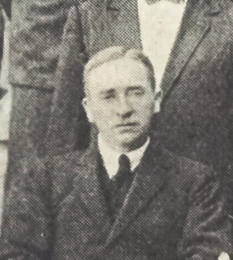Richard Hingston facts for kids
Major Richard William George Hingston (born January 17, 1887 – died August 5, 1966) was an Irish doctor, explorer, and naturalist. He worked in India with the Indian Medical Service and wrote many books about his travels and observations of nature.
Contents
Early Life and Adventures
Richard Hingston grew up in County Cork, Ireland. He went to Merchant Taylors' School and University College Cork. In 1910, he graduated with top honors and quickly joined the Indian Medical Service, which was a medical branch of the British Army in India.
His early career was full of adventure. In 1913, he joined an expedition to the Pamir Mountains, which are very high mountains in Central Asia. When World War I started in 1914, he served as a doctor in East Africa, France, and other places. He was recognized for his bravery and received the Military Cross award.
Exploring Nature and Writing Books
After his military service, Hingston focused on his passion for nature. In 1920, he published a book called A Naturalist in Himalaya. This book shared his experiences and discoveries from his travels in the Himalayan valleys.
The Mount Everest Expedition
In 1924, Major Hingston joined the famous Mount Everest Expedition. Even though he wasn't a mountain climber, he went as the medical officer and naturalist. His job was to study the plants and animals in this extreme environment.
During the expedition, he collected an amazing 10,000 animal samples, mostly insects, and 500 plant samples! One of his most exciting discoveries was a type of spider living at an incredible height of 22,000 feet. This spider was later named Euophrys omnisuperstes, meaning "standing above all." It was the highest-living animal known at the time! Hingston also studied how high altitudes affected the human body, sharing his findings in a paper called Physiological Difficulties in the Ascent of Mount Everest.
He also showed his medical skills when he helped Edward Norton, a climber who became snow-blind at one of the camps.
Further Expeditions and Discoveries
From 1925 to 1927, Hingston worked as a surgeon and naturalist on a ship called H.I.M.S. Investigator, which explored the seas around India. This allowed him to do new and important scientific research.
After retiring from the Indian Medical Service in 1927, he didn't stop exploring! He immediately joined an Oxford University expedition to Greenland. The next year, he led another Oxford expedition to British Guiana (now Guyana) in South America. He wrote about this journey in his book A naturalist in the Guiana forest (1932).
Later, he traveled to several African countries like Rhodesia, Kenya, and Uganda. His goal was to study how to protect the local wildlife there.
Later Life and Legacy
Major Hingston was called back to military duty in India during World War II, serving from 1939 to 1946. After the war, he returned to his home in County Cork, Ireland.
He was a very productive writer, known for being accurate and engaging. Many of his scientific observations appeared in journals, but he also wrote several books for the public. Most of the animal and plant specimens he collected are now kept at the Natural History Museum in London, where scientists can still study them today.
Books by Richard Hingston
- A naturalist in the Himalaya (1920): This book describes the spiders, ants, and butterflies he found in the high valleys of the Himalayas.
- A naturalist in Hindustan (1923): Here, he wrote about the smaller animals living on the plains of India.
- Problems of Instinct and Intelligence (1928)
- The Meaning of Animal Colour and Adornment (1933)
- Darwin (Great Lives) (1934)
He also contributed to:
- Norton, E.F. The Fight for Everest : 1924 (1925)


